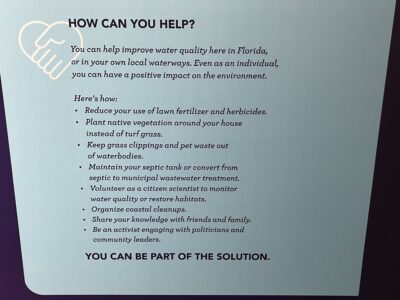Sign up for daily news updates from CleanTechnica on email. Or follow us on Google News!
One of the many consequences of the climate crisis is increasing flood threats. For cities to prevent flooding, they need to be designed like giant sponges that allow water to drain away safely. In its simplest iteration, a spongy city has planned green areas and permeable surfaces that absorb water during times of rainfall. The water seeps into an aquifer for later water use or evaporates and cools the city.
As cities face increasing threats from climate change — including heavy rainfall and extreme heat events — implementing this natural infrastructure is more important than ever.
Urban areas are facing the consequences of climate pollution due to high temperatures, floods, storms, droughts, and the expected rise in sea levels. Rapid growth in urban and associated industrial activities has eliminated many natural opportunities to absorb water. Spongy cities, on the other hand, have the benefits of flood prevention, stormwater pollution removal, and creating more green spaces.
Also known as green infrastructure (or low impact development, a slow water movement, or sensitive urban design), spongy cities give water the space it needs so it can absorb back into the earth instead of flowing into channels, pipes, or streets. Centuries of urban planning practices built gutters, sewers, and other infrastructure to redirect city rainwater. With devastating floods becoming common these days, it’s clear that gray infrastructure can’t any longer handle the amount of water it must hold — all that concrete is an outdated method of stormwater management, and it’s ineffective and harmful.
Enter a new generation of urban planners who are creating innovative ways to capture stormwater. Rather than a single method, spongy city planners embrace a water storage toolbox that’s mostly low-tech, like green roofs, vertical gardens, improved river drainage, plant-edged sidewalks, and swales. Restoring wetlands is another way to rethink gray infrastructure and create landscapes that are softer and purposely designed to absorb more water. Spongy urban areas are filled with natural areas such as trees, lakes, parks, and other green spaces and, are visually appealing, cooler, and sustainable.
Nature-based solutions to absorb urban water are about 50% more affordable than human-made solutions. Design features like more parks, trees, other greenery, or natural drainage absorb rain and replenish the aquifers, boost a city’s water retention capacity, and make it more flood resilient. Integrated into the city environment, spongy elements are natural additions to traditional urban aesthetics.
Case Studies of Spongy Cities
A shallow, former concrete bank now is home to native plants like joe pye weed, wild columbine, and woodland phlox. Marsh hibiscus and sweet flag flourish on mid-river islands. Many countries have undertaken urban water management measures to promote urban water use and flooding prevention so that nature-based solutions like these plants can thrive and assist with water collection.
The most famous example is the Chinese policy of Sponge City. According to the General Office of the China State Council, the target of the Sponge City Program (SCP) is to improve urban water management. By adopting measures such as “infiltration, stagnation, storage, purification, use, and discharge,” SCPs maximize the use of precipitation and reduce the impact of urban development and construction on the ecological environment.
Los Angeles city water managers weren’t fazed by this year’s atmospheric rivers, as they’ve been replacing impermeable surfaces, like concrete, with permeable ones, like dirt and plants. They have also built out spreading grounds where water accumulates and slowly soaks into the underlying aquifer, which acts like a natural underground tank that can hold 28 billion gallons of water. With traditional dams and spongy infrastructure, LA captured 8.6 billion gallons of stormwater, as reported by Wired, enough to provide water to 106,000 households for a year. For the rainy season in total, LA has accumulated 14.7 billion gallons.
Long reliant on snowmelt and river water piped in from afar, LA is on a quest to produce as much water as it can locally. “There’s going to be a lot more rain and a lot less snow, which is going to alter the way we capture snowmelt and the aqueduct water,” says Art Castro, manager of watershed management at the Los Angeles Department of Water and Power. “Dams and spreading grounds are the workhorses of local stormwater capture for either flood protection or water supply.”
Pittsburgh is deploying more rain gardens — a plot of vegetation that helps soak water into the ground from streets, roofs, and other infrastructure. They’re also building vegetated swales, which are ditches filled with grass and plants.
Traditional road construction, made with asphalt, gravel, and sand, is a very compacted structure that leaves little space between the particulates, as described in JSTOR Daily, so rainwater can’t seep through. So, where they absolutely must have a hard surface—sidewalks, parking lots, etc. — they’re using special concrete bricks that allow water to seep through. In the construction industry that gap measure is described by the term “air void,” which is typically set at 4 % for the traditional pavement mix, says Richard Willis, Director of Pavement Engineering and Innovation at National Asphalt Pavement Association.
When it rains in northeast Seattle, pollution from the streets runs into a creek untreated. Unhealthy for the habitat or local citizens, the city has embarked on a project in which natural drainage systems are an alternative to traditional stormwater management systems. They consist of shallow depressions built in the roadway shoulder (the space between the street edge and the property line) and are filled with deep-rooted plants and spongy soils that temporarily hold and clean polluted stormwater from streets. Urban planners also including pedestrian walkways on some blocks where they are installing natural drainage systems. These features capture and clean pollutants before they reach the creek. Seattle Public Utilities is leading this project alongside several partners.
Final Thoughts
Scale is the biggest challenge that spongy cities face — the movement needs to grow faster and at scale for it to more completely reverse the extreme degree to which humans have altered the natural water cycle. Water retention features need to be implemented to accommodate a volume of water commensurate with a city’s acreage, and spongy elements must be part of properly targeted projects.
While climate, geology, and socio-economic factors can all influence the way that spongy city planning is implemented, project financing, integration, and assessment are also influential, too, so that the capture of city-scale surface water and flooding management plans aren’t created in silos.

Have a tip for CleanTechnica? Want to advertise? Want to suggest a guest for our CleanTech Talk podcast? Contact us here.
Latest CleanTechnica TV Video
I don’t like paywalls. You don’t like paywalls. Who likes paywalls? Here at CleanTechnica, we implemented a limited paywall for a while, but it always felt wrong — and it was always tough to decide what we should put behind there. In theory, your most exclusive and best content goes behind a paywall. But then fewer people read it!! So, we’ve decided to completely nix paywalls here at CleanTechnica. But…
Thank you!
CleanTechnica uses affiliate links. See our policy here.





